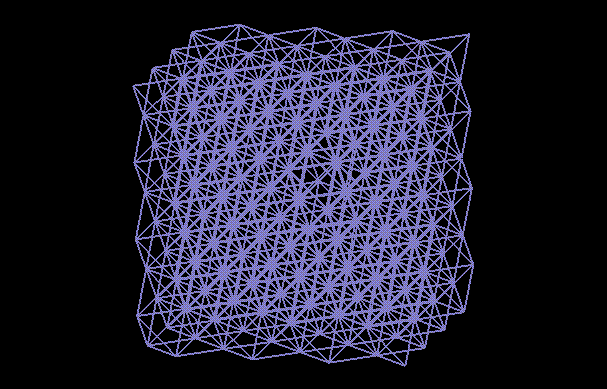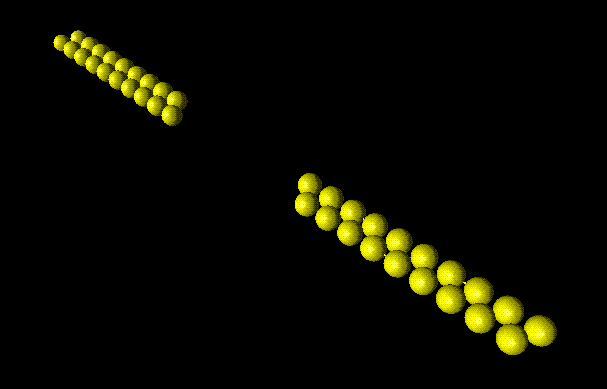
Figure 1 : Vacancy in a BCC crystal lattice.
For visualization purposes, the lattice atoms (arbitrarily designated so) are red and connected while the body centered atoms are yellow. The vacancy is "located" within the inner red cube.
The BCC iron vacancy simulation resulted in a defect energy of 5.988eV.

Figure 2 : Vacancy in a FCC crystal lattice.

Figure 3 : Vacancy in a FCC crystal lattice.

Figure 4 : Vacancy in a FCC crystal lattice.
The above three figures show the simulation of a defect in FCC iron. Figure 2 is included for the benefit of the reader. It is not "spiffed up," but rather shows the size and complexity of the simulation. The vacancy is the irregularity toward the center of the figure. For visualization purposes, both Figure 3 (ortho projection) and Figure 4 (perspective projection) show diagonals of all lattice faces. These are the "nearest neighbor" bonds. The lattice face that "contains" the vacancy (a "face" atom) is emphasized by the yellow color of its face's corners.
The FCC iron vacancy simulation resulted in a defect energy of 5.857eV.

Figure 5 : Free surface in a BCC crystal lattice.
The above figure looks rather odd, but that is because of the computational saving calculation scheme of the simulation software. First of all, the BCC lattice can be defined by only two atoms and three perpendicular vectors. Secondly, the symmetry of the surface in the x and z-directions means that periodic boundary conditions can be utilized to make computation faster. Therefore, all that you see is one lattice atom and one body centered atom per cubic unit. The surfaces have been seperated by 20Å so that they no longer interact and the change in energy can be computed as the free surface energy.
The following key data was extracted from bcc_sur.out for calculation of the defect (free surface) energy.
OUTER BLOCK IS 7 BY 33 BY 7 BUFFER THICKNESS 3 BY 3 BY 3 INNER BLOCK IS 1 BY 20 BY 1 DIMENSIONS OF THE INNER BLOCK: 2.87000 57.40000 2.87000 CYCLIC BOUNDARY IN X DIRECTION CYCLIC BOUNDARY IN Z DIRECTION THE PERFECT LATTICE BLOCK CONTAINS: TOTAL NUMBER OF ATOMS: NTOT = 66 NUMBER OF FREE ATOMS: NFREE = 40 NUMBER OF BUFFER ATOMS: 12 NUMBER OF FIXED ATOMS: 14 MAXIMUM ATOMIC DISPLACEMENT DUE TO RELAXATION: 0.13848 MAXIMUM FORCE AFTER RELAXATION: 0.000361 ---------------------------------------------------- MINIMUM ENERGY OF THE BLOCK: -0.1893485D+03 SPECIFIC ENERGY OF THE PLANAR DEFECT: 0.4032043D+01 ----------------------------------------------------
This calculation to correct for a software glitch was a little involved, but it went like this:
40+12=52atoms
*4.28eV=222.56eV
-189.35=33.21eV
/(3/1*2.87)^2=0.448eV/Angstrom
*16=7.167J/m^2
/2=3.58J/m^2 per surface